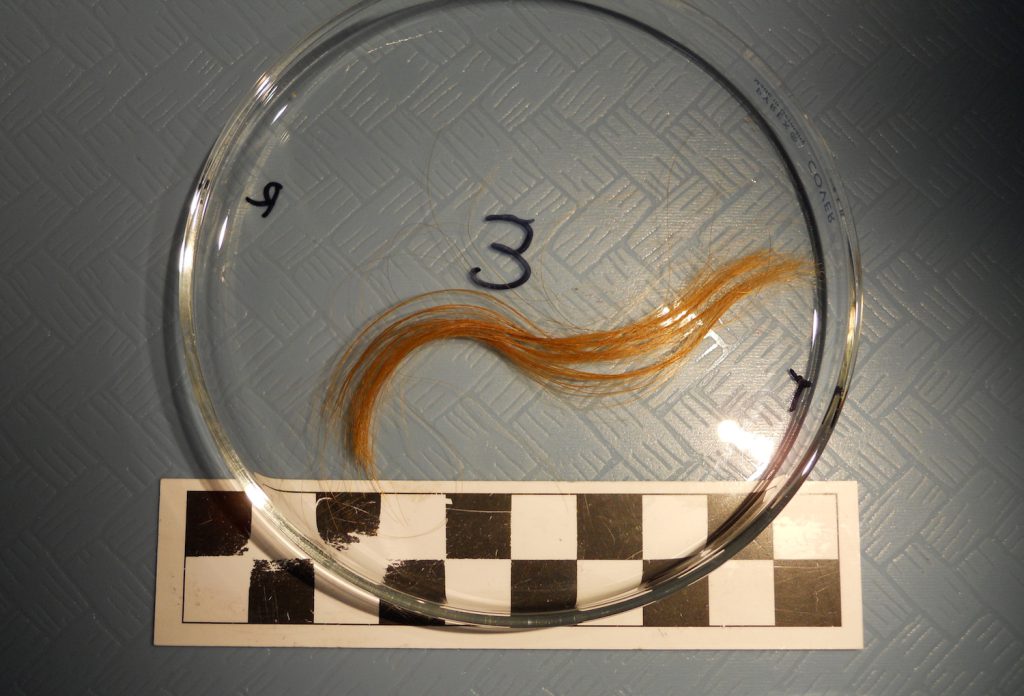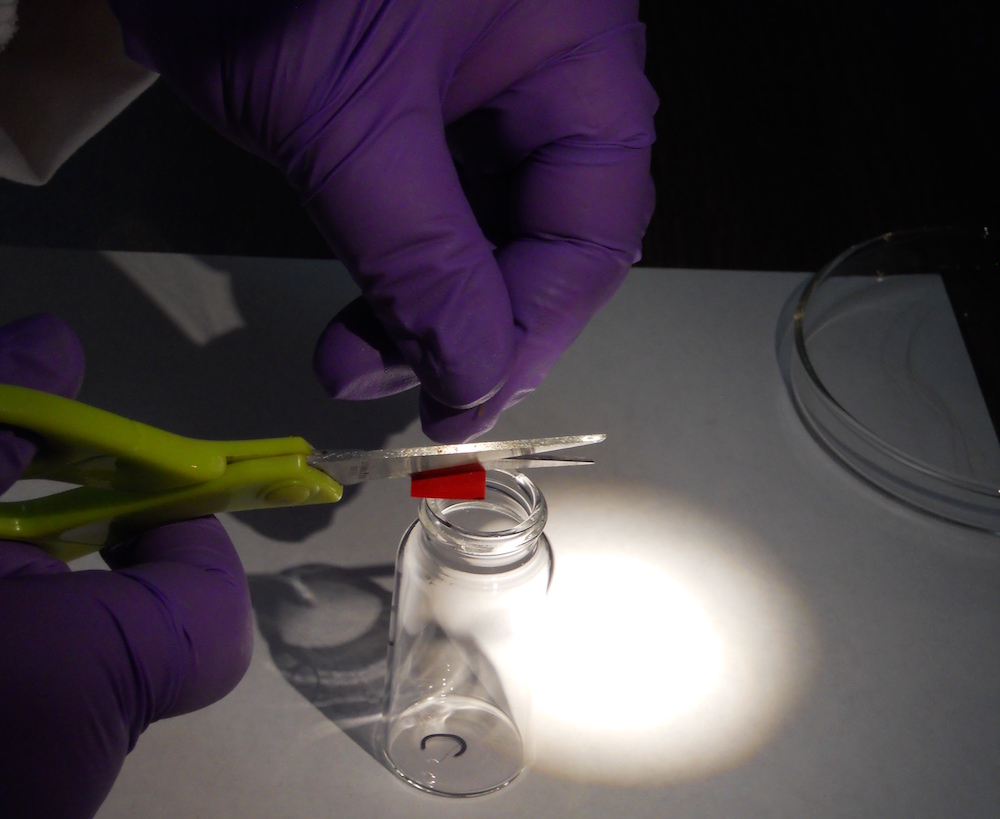What Human Hair Reveals About Death’s Seasonality

Each wave of Edith Howard Cook’s reddish-blonde hair tells a story. One segment may chronicle an unusually damp San Francisco summer; another may recall a dry December. But read in their entirety, the strands reveal the season in 1876 when 2-year-old Edith passed away.
Archaeologist Jelmer Eerkens helped identify Edith after a construction crew discovered her remains in a backyard in 2016. “I have kids myself,” says Eerkens, an archaeologist at the University of California, Davis. “So, I oftentimes think about living in the 1800s. And children dying was just a common thing.”
By 1900, for example, children under the age of 5 accounted for 30 percent of all deaths in the U.S.—often from tuberculosis and flu, which fluctuate with the seasons. “Your kid gets sick: Are they going to die? Are they going to live? It must have been heart-wrenching,” Eerkens notes.
In a new study published in the American Journal of Physical Anthropology, Eerkens and his colleagues introduce a method to decode the season of an individual’s death using hair. This proof-of-concept effort accurately predicted the season in which Edith died by tracking a specific chemical signature—hydrogen isotopes—in her hair. This work could help tease out how seasonal changes influenced mortality in societies around the world.
Records show that deaths have historically oscillated with seasonal conditions. And unpacking this seasonality for people of any age, geography, or era can document a more vivid anthropological history. Some clusters may even reveal ancient epidemics or forgotten histories of seasonal violence.
Eerkens adds that with death come rituals to help people cope—the trauma of many deaths concentrated in a particular time of year can iron a crease into cultural and archaeological legacies. His method offers a new way to identify these annual waves of death.
Isotopes are distinctly heavier or lighter forms of chemical elements; scientists can use instruments called mass spectrometers to identify and quantify isotopes in a sample of hair or bone. With human remains, archaeologists see isotopes as caches of interactions between that individual and their environment.
Hair can be a particularly useful source of isotopes in archaeology. Bones and teeth also carry isotopes, but they stop growing in a person’s twenties. Hair doesn’t. Millimeter by millimeter, follicles assemble keratin proteins with environmental carbon, nitrogen, and hydrogen. “Hair is a fantastic record because it grows so fast,” says Eerkens. “We can get this sort of neat record into someone’s behavior—someone’s life.”
The catch is that hair does not last as long as bone in many burial conditions. “It’s a very, very rare case that we’d ever be finding this hair,” says Siân Halcrow, a bioarchaeologist at the University of Otago in New Zealand, and an expert in infant and child remains not involved with the study.
Edith’s air-tight metal casket mummified her skin and prevented her hair from decomposing over the 140 years she spent underground. Eerkens, a veteran practitioner of isotope analysis, got permission to detach two locks in 2016, when the construction crew unearthed her remains.
In some respects, analyzing hair isotopes offers a tool much like reading tree rings or stacked layers of ancient rock.
He and his colleagues first analyzed carbon and nitrogen isotopes in her hair, and showed, in 2017, that the mysterious child died battling an illness that starved her over time. That evidence helped identify Edith, but Eerkens had enough strands remaining to investigate hydrogen isotopes in her hair too. Eerkens knew the girl had died in San Francisco on October 13, 1876. But he had a hunch that the embedded specks of hydrogen could, in a sense, prove that Edith’s hair “knew” that as well.
Eerkens’ team began by compiling data on hydrogen isotopes’ fluctuation in San Francisco’s water in a given year. Climate and altitude deal out hydrogen and its less common “heavy” isotope, hydrogen-2, differently. Their ratio in hair, therefore, represents specific geographies and annual patterns. Water from a creek in southern Florida, for example, likely flows with more heavy hydrogen isotopes than does water in central California—and isotope ratios in both places will rise and fall with the seasons.
To trace that seasonality in Edith’s hair, Eerkens’ team lined up 50 strands and carefully segmented the bunch into 32 sections, each just 5 millimeters long. They hoped the varying levels of hydrogen isotopes in her hair’s keratin would match San Francisco’s seasonal swings exactly. And indeed, the girl’s wavy locks presented the chemical crests and troughs that matched their model of hydrogen isotopes over the course of the last year of her life. The analysis corresponded with the historical record: The last season Edith Howard Cook experienced was autumn.
Using just an environmental model and an analysis of Edith’s hair, Eerkens deduced that the girl lived in the San Francisco Bay area and died in the fall. “I think it’s an amazing, really valid, robust scientific study,” says Halcrow.
Kate Britton, an archaeologist at the University of Aberdeen, adds that “this is a really nice case study,” but both she and Halcrow caution that the method is limited by reliance on well-preserved hair. “Warm, wet conditions just favor breakdown,” says Britton.
Still, hair can be preserved in some waterlogged, freezing, dry, or salty conditions. Both Britton and Halcrow acknowledge that Eerkens’ method could help reveal forgotten epidemics all over the world with mummified remains.
Halcrow also imagines using it in her own archaeological work with human remains naturally mummified by arid conditions in northern Chile. “There’s been a lot of theories put forward about why there’s such high mortality in those populations,” she says, referencing people from the Chinchorro culture who lived in that region between 7000 B.C. and 1500 B.C. Some evidence of scurvy in that area suggests that El Niño–induced droughts led to famine. Testing the well-preserved hair from remains could prove a connection between climate and death. “Being able to apply another type of isotopic analysis to look at this would be really interesting,” she adds.
In some respects, analyzing hair isotopes offers a tool much like reading tree rings or stacked layers of ancient rock. As Eerkins points out, many clues can be gleaned from a few select strands: “They’re little tiny layers of growth, little one-week or two-week insights into something specific about somebody.”
This article was republished at The Atlantic.


































